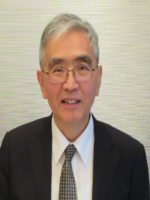Health for All has been the goal in health policy.1 To achieve this goal, stakeholders must be the engaged and empowered.2 However, this has been difficult to achieve. In this blog, I examine two policy goals from an economic perspective.
Equal access to health services
The economic rationale for patients to have equal access to health services lies in the “informational externalities”.3 This is the benefit from knowing that patients without means would be able to access to health services. The goal has been expanded to not only having access, but having equal access to services of the same quality. However, health services are not necessary delivered in line with this egalitarian principle even in high-income countries. Those who are able and willing to pay generally tend to have better access. Moreover, patients who pay privately are treated by renowned physicians. Having access to renowned specialists has an intrinsic value, irrespective of the outcome. The economic term for products which have value derived from their scarcity, such as works of art, is positional goods.4 The extent to which compromises are made to egalitarian principles is the key to the success of health care reform.
Increasing efficiency
Adam Smith explained how pins could be efficiently made by dividing the task so that “one man draws out the wire, another straights it, a third cuts it” and so forth.5 However, in health care, the division of labor among physicians, nurses and other health workers has increased, rather than decreased, the number of workers performing the task. Why should this be the case? In producing pins, unskilled workers were hired at low wages and trained to perform the task. The wire used as material and the pins produced were the same. In contrast, in health care, services must be tailored to meet the unique needs of the patient. Moreover, the needs are determined by physicians who have autonomy and do not take costs into consideration. There is also no agreement on whether services should be delivered exclusively by physicians or whether the services could (should) be shifted (transferred) and/or shared with other health workers. It should be noted that the division of labor has also developed in the allied health professions. For example, to deliver rehabilitation services, there must be physiotherapists, occupational therapists and speech therapists irrespective of workload.
Under these conditions, how can efficiency be increased, that is the same or better outcomes at lower costs? The first is clinical pathways.6 Clinical pathways set the services for each day on a daily basis from admission to discharge based on the diagnosis or surgical procedure. By doing so, service delivery is standardized and made more efficient. The second is to shift the task, such as taking an electrocardiogram, from physicians to technicians. The third is to contain costs by limiting the number of specialists and medical centers. Although all three measures would be opposed by stake-holders, they are prerequisites to improving the efficiency the health care system.
References
1 Mahler, H. The meaning of Health For All by the year 2000, World Health Forum, Vol. 2, No. 1, 1981 Full text of "World Health Forum 1981: Vol 2 Index" (archive.org)
2 Barasa EW, Molyneux S, English M, Cleary S: Setting Healthcare Priorities at the Macro and Meso Levels: A Framework for Evaluation /*10.15171/IJHPM.2015.167
3 Culyer AJ. Is medical care different? In Cooper MH, Culyer AJ (ed): Health Economics, pp. 49-74. Harmondsworth: Penguin Books, 1973./*-
4 Hirsh F: The Social Limits to Growth. London: Routledge & Kegan Paul. ISBN 0-674-81365-0
5 Smith A. (1776): An Inquiry into the Nature and Causes of the Wealth of Nations. (73) The Wealth of Nations by Adam Smith | Pardaf Ro - Academia.edu
6 Lawal AK, Rotter RM, Kinsman L, Machota A, Ronellefitsch U, Scott SD, Goodridge D, Plishka C, Groot G: What is a clinical pathway? Refinement of an operational definition to identify clinical pathway studies for a Cochrane systematic review. BMC Medicine 14: : 35 (2016)
About the author
 Naoki Ikegami M.D., Ph.D., M.A., is Professor Emeritus at Keio University, Tokyo, and Adjunct Professor, Kurume University, Kurume. He was Chair of the Department of Health Policy and Management at the Keio School of Medicine, from which he received his MD and PhD, and Professor at St Luke’s International University School of Public Health (2016~21).
Naoki Ikegami M.D., Ph.D., M.A., is Professor Emeritus at Keio University, Tokyo, and Adjunct Professor, Kurume University, Kurume. He was Chair of the Department of Health Policy and Management at the Keio School of Medicine, from which he received his MD and PhD, and Professor at St Luke’s International University School of Public Health (2016~21).
Stay informed about the latest updates from the Collective





